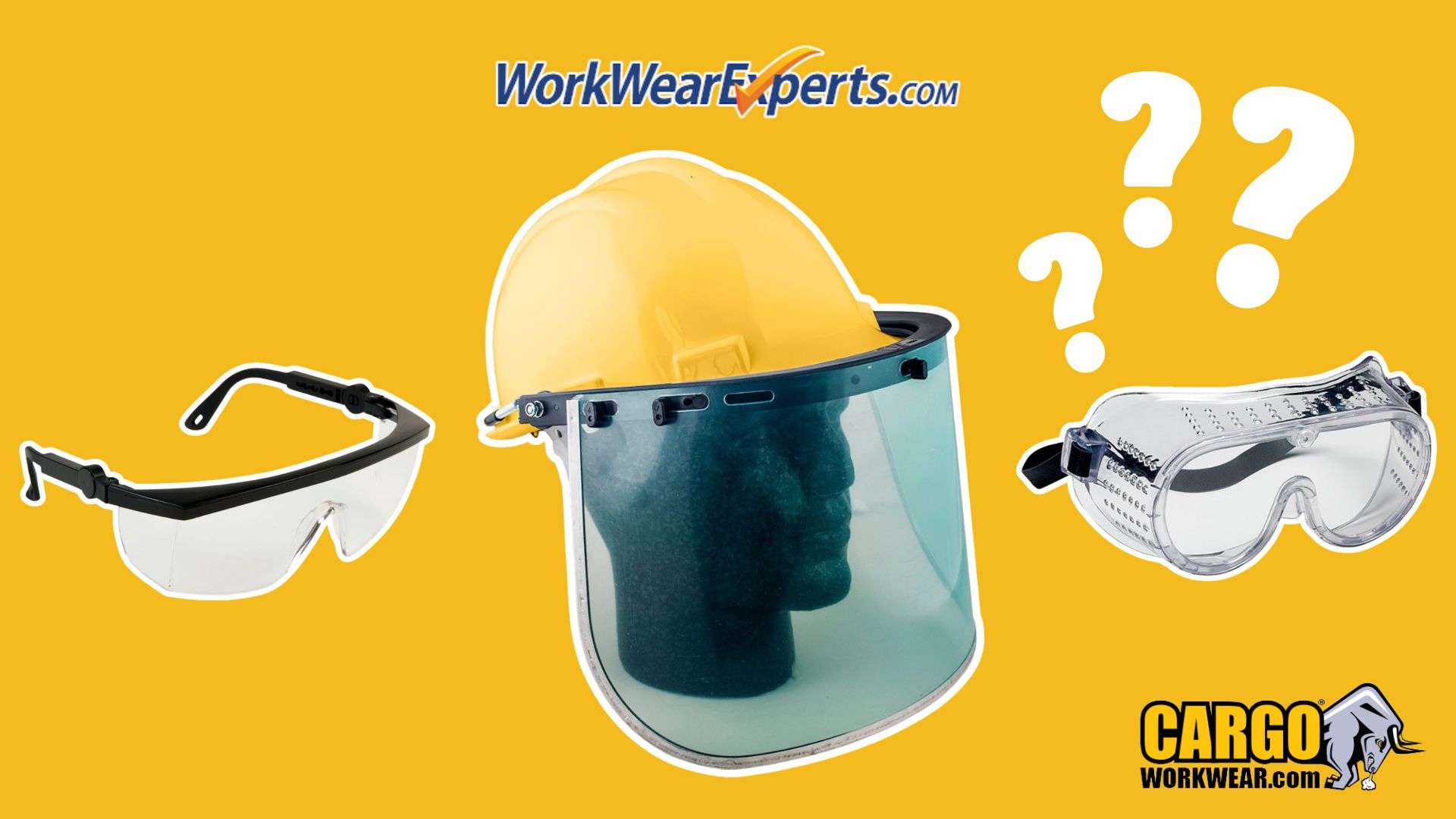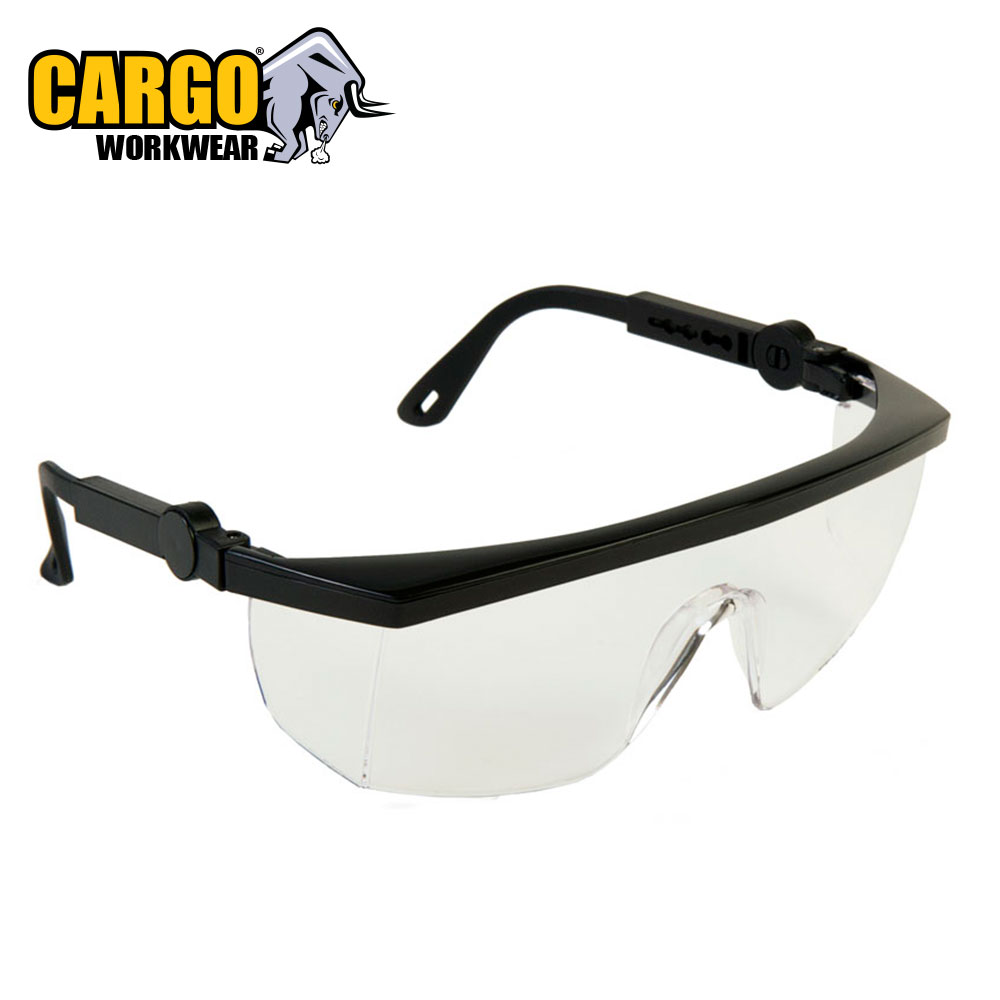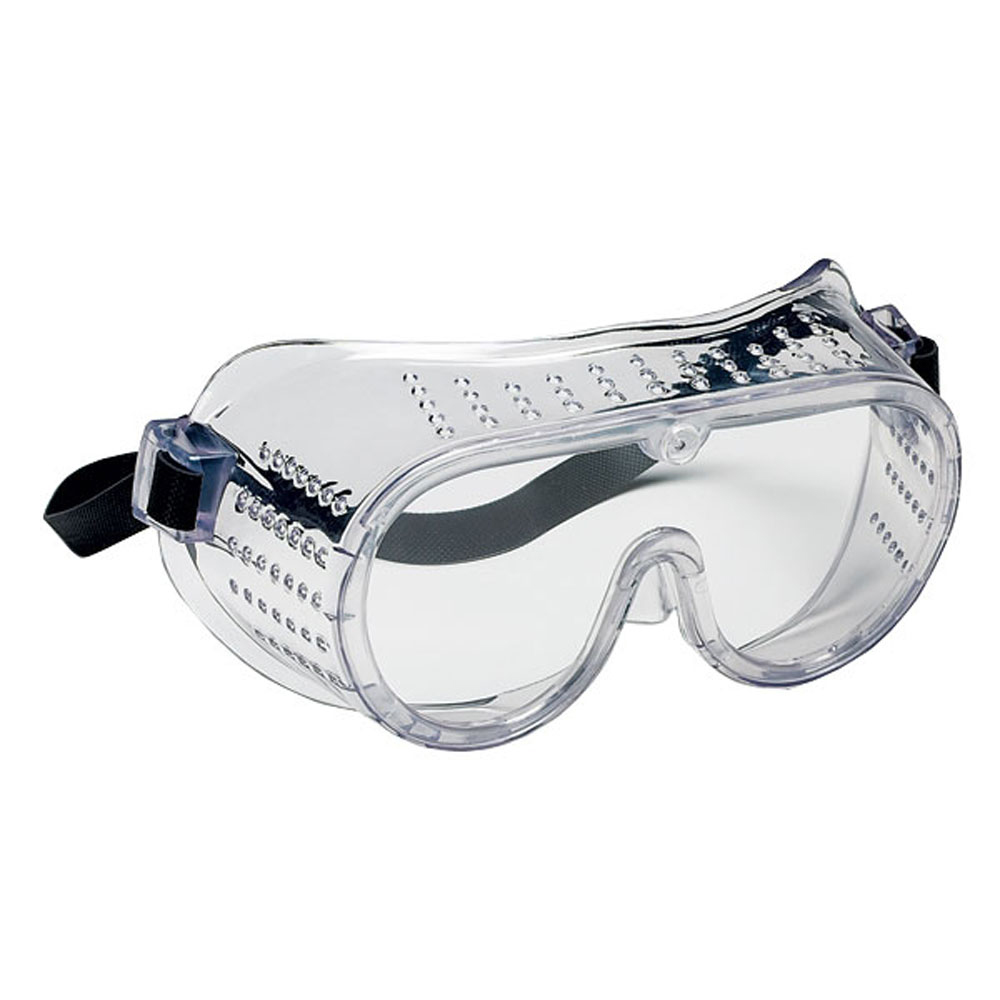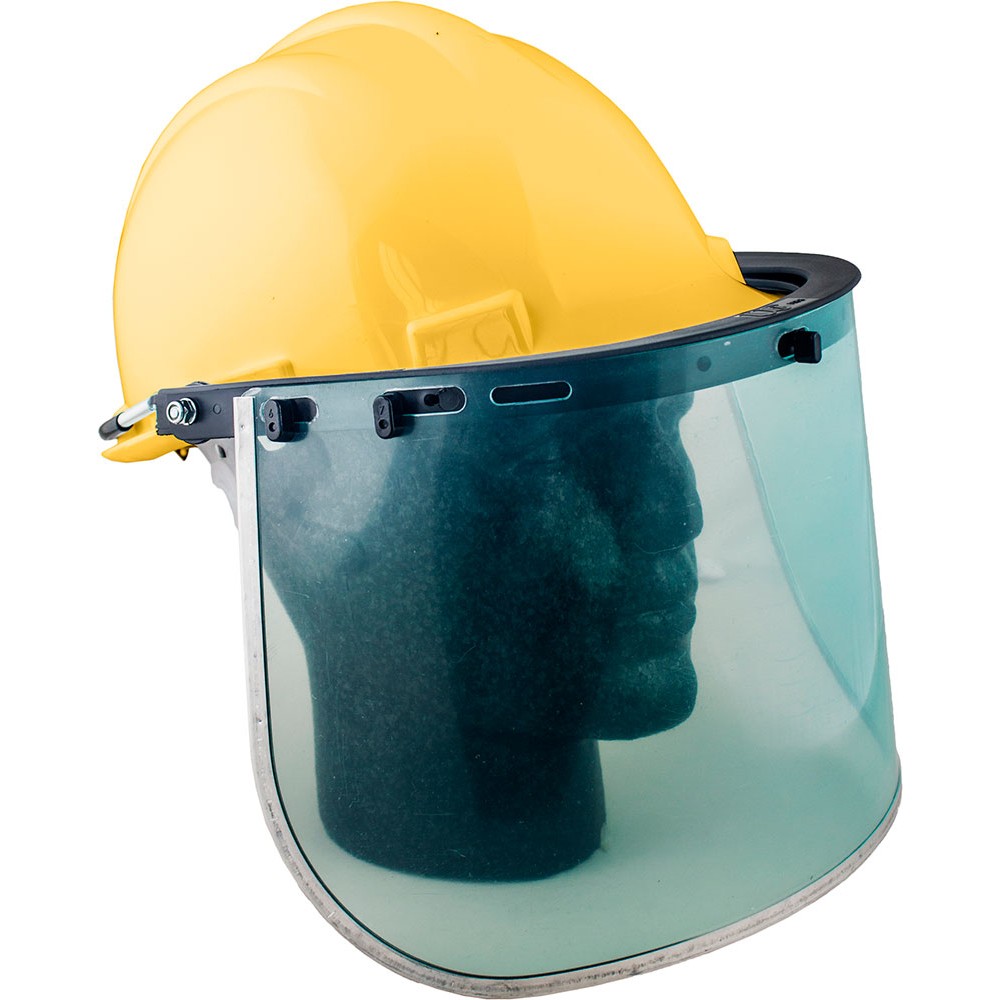Protecting Your Vision: Select the Best PPE for Your Industry

In any industry, protecting your vision and facial health is not just a matter of comfort—it's a vital aspect of workplace safety. The eyes and face are among the most vulnerable areas of the body, exposed to a wide range of hazards, from flying debris and chemical splashes to harmful radiation and intense light. Without the right protection, these hazards can lead to serious injuries, some of which may result in permanent damage.
This is where Personal Protective Equipment (PPE) for the eyes and face comes into play. Whether it’s safety glasses, goggles, or face shields, selecting the right type of PPE is essential to ensure adequate protection against the specific risks present in your work environment.
This guide will help you navigate the different types of eye and face protection available, providing you with the knowledge to choose the best PPE for your industry. By understanding the importance and functionality of each type, you can make informed decisions that will keep you and your team safe on the job.
Understanding the Risks: Why Eye and Face Protection Matters
In many workplaces, the eyes and face are exposed to various hazards that can cause severe injuries, and in some cases, permanent damage. Understanding these risks is the first step in recognising the importance of proper eye and face protection.
Common Hazards Across Industries
- Flying Debris and Particles: In construction, manufacturing, and other hands-on industries, workers are frequently exposed to flying debris and particles. These small but dangerous projectiles can easily cause eye injuries if proper protection isn’t worn. Even something as seemingly harmless as a small metal shaving can lead to serious harm if it strikes the eye at high speed.
- Chemical Splashes: For those working in laboratories, healthcare, or chemical processing plants, the risk of exposure to hazardous chemicals is a daily concern. Chemical splashes can cause immediate and long-lasting damage to the eyes and face, making it essential to wear protective goggles or face shields designed to guard against such risks.
- Radiation and Intense Light: Welders, electricians, and workers in industries involving lasers or other intense light sources are at risk of radiation exposure that can damage their vision. Without proper eye protection, these workers can suffer from conditions such as welder’s flash or cataracts caused by prolonged exposure to harmful UV and infrared rays.
- Impact Injuries: Workers in environments where there is a risk of impact from moving machinery, tools, or heavy objects need robust eye and face protection. These injuries are not only painful but can also result in long-term vision impairment if not properly mitigated.
Real-World Consequences of Inadequate Protection
Failing to use appropriate eye and face PPE can have devastating consequences. For instance, a carpenter might lose vision in one eye due to a splinter of wood striking unprotected eyes, or a lab technician could suffer chemical burns to the face because they weren’t wearing a full face shield. These incidents highlight the critical importance of selecting and using the right protective gear.
By understanding the specific risks associated with different industries, you can better appreciate the need for targeted PPE solutions. This knowledge will guide you in choosing the most effective eye and face protection, ensuring that both you and your colleagues remain safe while carrying out your daily tasks.
Types of Eye and Face Protection PPE
Choosing the right eye and face protection starts with understanding the various types of PPE available and how they are designed to safeguard against specific hazards. Here’s a breakdown of the main types of eye and face protection equipment and when to use each:
Safety Glasses/Spectacles
Safety glasses are one of the most common forms of eye protection and are designed to shield the eyes from impact hazards, such as flying debris and particles. They feature strong lenses made from materials like polycarbonate, which is highly resistant to impact, yet lightweight for all-day wear.
- When to Use: Safety glasses are ideal for environments where there is a risk of impact from flying objects but minimal exposure to chemicals or dust. They are commonly used in construction, woodworking, and metalworking.
- Key Benefits: Lightweight, comfortable, and available in various styles, including prescription options and tinted lenses for outdoor work. However, they do not provide full coverage around the eyes, leaving some gaps where particles could enter.
- Limitations: Safety glasses do not protect against chemical splashes, dust, or fine particles, which can enter the eyes from the sides or beneath the lenses.
| Cargo Industry Safety Glasses |
 |
Goggles
Goggles offer a higher level of protection than safety glasses, providing a secure seal around the eyes to protect against impact, dust, and chemical splashes. They are available in different types to suit various hazards:
- Impact Goggles: Designed to protect against high-velocity impacts, these goggles are commonly used in environments where safety glasses may not offer sufficient protection, such as heavy machinery operation or grinding.
- Chemical Splash Goggles: These are specifically designed to protect against liquid splashes and vapours, making them essential in laboratories, chemical plants, and similar settings.
- When to Use: Goggles are necessary in situations where there is a risk of exposure to hazardous liquids, dust, or when a secure seal around the eyes is required.
- Key Benefits: Provides complete coverage and protection from a wider range of hazards compared to safety glasses. They also come with anti-fog features, ventilation options, and are available in models that can fit over prescription glasses.
- Limitations: Goggles can be less comfortable than safety glasses, especially if worn for extended periods. They may also limit peripheral vision slightly due to the full seal around the eyes.
| Direct Vent Economy Safety Goggle |
 |
Visors/Face Shields
Face shields provide full face protection, covering not just the eyes but also the nose, mouth, and skin. They are particularly useful in environments where there is a risk of large debris, chemical splashes, or even infectious agents. While face shields alone may not be enough for eye protection in high-impact situations, they are often used in conjunction with safety glasses or goggles.
- When to Use: Face shields are essential in industries like healthcare, chemical processing, and welding, where the entire face needs protection. They are also useful in scenarios involving high heat or the risk of splashes from hazardous liquids.
- Key Benefits: Offers extensive protection for the entire face, and can be combined with other PPE like helmets and respirators. Modern face shields are often lightweight and adjustable for comfort.
- Limitations: Face shields do not provide the same level of impact protection as safety glasses or goggles when used alone. They are best used as an additional layer of protection, not as a substitute for primary eye PPE.
| Kit 2 Helmet with Attachable Polycarbonate Visor |
 |
Understanding the different types of eye and face protection available ensures that you can select the most appropriate PPE for the specific hazards present in your industry. Each type of protection serves a distinct purpose, and using them correctly can significantly reduce the risk of injury in the workplace.
Selecting the Right PPE for Your Industry
Choosing the appropriate eye and face protection isn’t a one-size-fits-all decision; it requires careful consideration of the specific hazards present in your industry. Here’s how you can make an informed choice:
Industry-Specific Considerations
- Construction and Manufacturing: In these industries, workers are often exposed to flying debris, dust, and potential impacts from tools or machinery. Safety glasses with side shields or impact goggles are essential to protect against these risks. For tasks involving grinding, welding, or cutting, a combination of safety glasses and face shields may be necessary to provide both impact and facial protection.
- Chemical Processing and Laboratories: When working with hazardous chemicals, the risk of splashes and exposure to harmful vapours is high. Chemical splash goggles, which offer a tight seal around the eyes, are critical. In environments where the entire face could be exposed to chemicals, such as during mixing or pouring, a full-face shield in conjunction with goggles provides comprehensive protection.
- Healthcare and Emergency Services: Healthcare workers are at risk of exposure to infectious diseases, bodily fluids, and potentially harmful chemicals. A combination of goggles and face shields is recommended, especially during procedures that generate aerosols or splashes. PPE should be chosen not only for protection but also for comfort during long shifts.
- Welding and Metalwork: Welding and metalworking pose unique risks, including exposure to intense light, heat, and flying sparks. Specialised welding helmets or face shields with appropriate filters for UV and infrared radiation are essential. These should be combined with safety goggles to protect the eyes when the face shield is lifted.
- Food and Beverage Industry: In environments where hygiene is crucial, such as food processing, face shields can protect against contamination while also safeguarding workers from splashes and heat. Eye protection may be needed where there is a risk of chemicals or cleaning agents.
Standards and Regulations
Compliance with safety standards is crucial in ensuring that the PPE you select is adequate, legally acceptable, and provides the necessary protection for workers. In both the UK and the Republic of Ireland, the relevant standards are aligned with European directives, ensuring consistency in safety requirements across the region.
- EN 166: This is the primary European standard for eye protection, covering general requirements for various types of eye PPE, including safety glasses, goggles, and face shields. It specifies criteria for impact resistance, optical clarity, and protection against hazards such as chemical splashes, dust, and radiation. Compliance with EN 166 is essential for any eye protection used in workplaces across the UK and Ireland.
- EN 169 & EN 170: These standards address specific requirements for filters used in eye protection. EN 169 pertains to welding filters, ensuring that safety glasses, goggles, or helmets used in welding offer adequate protection against infrared and visible light radiation. EN 170 focuses on UV protection, specifying the requirements for lenses that filter out harmful ultraviolet light. These standards are particularly important for industries involving welding or exposure to bright light sources, ensuring that workers' eyes are shielded from potentially damaging rays.
- EN 1731: This standard applies to mesh face screens used for protection against mechanical hazards. It is particularly relevant for tasks such as woodworking, landscaping, and other activities where workers are exposed to flying debris. EN 1731 ensures that the mesh screens are durable enough to prevent penetration by high-velocity particles, providing effective protection for the face.
These European standards are recognised and enforced in both the UK and the Republic of Ireland, ensuring that PPE provides consistent and reliable protection across different industries. By selecting eye and face protection that meets these standards, you can be confident that you are complying with legal requirements and providing your workers with the best possible safety equipment.
Comfort and Fit
Even the most protective PPE will be ineffective if it’s not worn consistently. Therefore, comfort and fit are critical factors in PPE selection:
- Adjustability: Look for eye and face protection that offers adjustable features, such as straps or frames, to ensure a secure and comfortable fit. This is particularly important for workers who wear PPE for extended periods.
- Compatibility with Other PPE: Ensure that the eye and face protection you select can be comfortably worn with other necessary PPE, such as helmets, ear protection, or respiratory masks. For instance, a face shield should not interfere with a hard hat, and goggles should fit snugly with a respirator.
- Anti-Fog and Ventilation Features: In environments where temperature changes or humidity could cause lenses to fog, selecting PPE with anti-fog coatings or ventilation features is crucial to maintain clear vision.
By considering the specific hazards of your industry, adhering to safety standards, and prioritising comfort, you can ensure that the eye and face protection you select provides the best possible safety for your workers.
Maintaining and Caring for Your Eye and Face PPE
Proper maintenance and care of your eye and face protection PPE are essential to ensure that it continues to offer the highest level of protection. Neglecting this aspect can lead to reduced effectiveness, increasing the risk of injury. Here’s how to keep your PPE in top condition:
Cleaning Your Eye and Face PPE
- Daily Cleaning: After each use, clean your safety glasses, goggles, or face shields to remove any dust, debris, or chemicals that may have accumulated. Use a mild soap solution and warm water, avoiding harsh chemicals that could damage the lenses or coatings. For items with anti-fog coatings, ensure that the cleaning method does not degrade this feature.
- Disinfection: In environments where PPE is shared, such as in healthcare or laboratories, disinfecting the equipment between uses is critical. Use disinfectants that are effective against bacteria and viruses but are also safe for use on protective gear. Follow the manufacturer's guidelines for disinfection to avoid damaging the PPE.
- Avoiding Scratches: Scratches on lenses can impair visibility and compromise safety. Store your PPE in a protective case when not in use and avoid placing it lens-side down on surfaces. If scratches do occur, assess whether the PPE still provides adequate protection or if it needs replacing.
Proper Storage
- Temperature and Humidity Control: Store your PPE in a dry, cool place away from direct sunlight. Excessive heat or humidity can warp or degrade materials, particularly in goggles and face shields. This can affect the fit and the protective qualities of the equipment.
- Designated Storage Areas: Establish designated storage areas for PPE to prevent it from getting lost or damaged. Ensure that the storage area is clean and free from contaminants that could compromise the safety gear.
- Avoiding Contamination: In industries dealing with hazardous substances, ensure that PPE is stored away from any chemicals or materials that could contaminate it. Contaminated PPE can pose a risk when next worn, potentially causing harm rather than offering protection.
Regular Inspection and Replacement
- Routine Inspections: Regularly inspect your PPE for signs of wear and tear. Check for cracks, discolouration, or loose fittings that could reduce the effectiveness of the protection. Pay particular attention to the condition of the lenses, straps, and seals.
- Replacement Schedule: Even with careful maintenance, PPE has a limited lifespan. Follow the manufacturer's recommendations for replacement, and don’t hesitate to replace equipment if it shows signs of wear. For example, safety glasses or goggles with scratched or cloudy lenses should be replaced immediately to ensure clear vision and optimal protection.
- Log Maintenance Activities: Keep a log of maintenance and replacement activities for your PPE. This not only helps in tracking the condition of the equipment but also ensures compliance with workplace safety regulations, demonstrating that proper care is taken to maintain protective gear.
By implementing these maintenance and care practices, you can extend the life of your eye and face PPE while ensuring it remains effective in protecting against workplace hazards. Regular cleaning, proper storage, and timely replacement are all key to maintaining a safe work environment where PPE reliably protects the eyes and face from potential injuries.
Conclusion
Protecting your vision and face from workplace hazards is not just a regulatory requirement; it's a crucial aspect of maintaining a safe and productive work environment. By understanding the specific risks in your industry and selecting the appropriate PPE, you can significantly reduce the likelihood of injuries that could have long-lasting consequences.
Whether it’s the right pair of safety glasses, secure-fitting goggles, or a comprehensive face shield, each piece of equipment plays a vital role in safeguarding your most vulnerable features.
However, choosing the right PPE is just the beginning. Ensuring that your equipment is well-maintained, properly stored, and regularly inspected is equally important. This commitment to safety not only protects you and your team but also fosters a culture of care and responsibility within your workplace.
Explore our top-quality eye and face protection PPE at WorkwearExperts.com. From safety glasses to face shields, we have the perfect solution for your industry. Don’t compromise on safety—invest in the best PPE today. Need help? Our expert team is here to assist you in finding the right gear for your team. Contact us now!
Your email address cannot be published. Required fields are marked*
